It’s been almost exactly 4 years to the week since PowerTap first announced their PowerTap P1 pedals, and it didn’t take long for them to rocket to popularity. The installation required nothing more than a simple hex wrench, and the accuracy was on point. But over time new competitors came into the space and started stealing some of their thunder. We had Favero with their BePro and then Assioma pedals – both undercutting PowerTap in pricing. And then we had Garmin with their Vector pedals – undercutting PowerTap in the looks department.
So this past fall PowerTap announced their new P2 pedals. Would these new pedals take back their throne? Well, spoiler alert – not really. The company opted for some very minor tweaks in battery life and internal weight rather than an exterior redesign or new software features. Still, one strength of the PowerTap pedals is that they just work – a quality which sometimes as of late in trainers and power meters is often missing. Plus, the pricing does still undercut Garmin – so there’s that.
And this intro section is beginning to sound more like my closer. So before I give away too many secrets – let’s get the thing unboxed and put it to the test for a few months.
What’s in the box:
The box of the PowerTap P2 pedals is exactly the same as the PowerTap P1 pedals. In fact, it’s so much the same that when I was sent a final production set to test the exterior paper wrapper still said P1. No worries, the new wrapper shipping was just a bit behind.
Oh, and I fixed it for them:
Inside though it was all the proper parts:
Here’s what you’ve got. First up, the pedals themselves:
Then there’s two AAA batteries, along with two battery caps, and two washers:
The batteries simply slide in the pedals, and the battery caps atop them:
There’s also two sets of cleats. Keep in mind that these are sorta Look KEO cleats, but not exact matches. I find that if I’ve got new cleats then they won’t work well with standard Look KEO pedals. Whereas if my cleats are a bit more worn (due to time), then they work just fine.
And that’s the end of the unboxing section. It’s quick and easy.
Oh, and in case you’re curious about the differences between the P1 and P2 pedals, first, some imagery. The black one is the P1 pedals, and the silver one is the P2 pedal:
From an exterior standpoint, no changes except coloring were made (now silver instead of black). Instead, everything is internal. Here’s the complete list of changes.
Weight: Reduction of total pedal mass, down below 400g now (previously was 437g). This reduction was done mostly internally inside the pedal body by cutting away inside. However, there is now a small cutout from under the skid plate as well. Externally there’s no visible differences in size.
Battery life: The company says the units will now get 80 hours of battery life per battery (still AAA), however with more steady-state and longer rides, you could see up to 100hrs of battery life. They noted that this was done by tweaking some of the electronics inside to gain back some battery life.
Improved sealing: The company says they learned a lot from the PowerTap P1, and specifically had a lot of “why are people using it like that” moments when troubleshooting issues. They say that the new unit improves various sealing points more than before. They did note that the PowerTap P1 did see a lot of changes in-line though over the years (for example we saw the new battery caps pretty quickly after introduction).
It got a paint job: It’s now silver, which, PowerTap admits is…’polarizing’ (their words, not mine). I probably would have selected other words, but given the majority of this post (outside the PowerTap P2 section) is mostly ranting, I’m running low on creative ways to phrase this one.
Got all that? Good.
Installation and Config:
When I’m writing posts, I enjoy sections I can write quickly. For example, when writing this same section for the SRM EXAKT power meter pedals, my keyboard and camera nearly ran out of battery due to all the steps and quirks needed to get it installed.
Whereas with the PowerTap P2 pedals, it takes about 28 seconds, or maybe 54 seconds if you’re slow (and 98 seconds if you somehow put the wrong pedal on the wrong side). Here, take the pedals and find yourself a 8mm hex wrench:
Now, put the left pedal on the left side using that little wrench. The way this particularly advanced wrench works is you spin it. When it stops spinning, it’s done. Actually, give it a nice little tug to get them good and snug.
Then repeat for the other side.
Ok, you’re done. They’re installed.
Actually, three minor notes for seriousness. The pedals come with spacers (washers) that can be used to ensure that the unit portion doesn’t press directly up against the crank arm, particularly carbon arms. If it does, add a spacer so there’s a tiny gap there.
And the second note is that if you’ve got a crank length that’s not 172mm (such as 175mm like me), then you’ll need to set the crank length. You can do that via the PowerTap Mobile app, or a head unit like a Garmin. More on that later.
And the third note is that after I install pedals I like to do a couple of quick sprints to ensure the pedals are nice and set. I prefer to do this indoors, in the event something catastrophic happens with new gear I don’t end up face-planting myself into the pavement. Do this before you do the zero-offset though. I recommend 2-3 sprints of about 4-8 seconds long. I recommend this for all power meters (as do most manufacturers). Alternatively, if you just go for a normal ride it’ll take care of itself by the end of it (but your power numbers may be a bit off till then).
Oh – and finally, like all power meters, you’ll want to do a zero off-set to get it properly calibrated. I’ll cover that too in a moment. You can do that from the app or your GPS bike computer.
General Use Overview:
Once you’ve got the PowerTap P2 pedals installed, you’re basically ready to rock and roll. It’s got dual ANT+ & Bluetooth Smart broadcast functionality (albeit, on the Bluetooth Smart side with some catches I’ll cover), as well as the ability to broadcast power, cadence and power balance. Note that if you buy the single-sided P2S pedal it won’t do power balance since you have only one pedal.
The pedal body is IPX7 waterproofed (30 minutes at 1-meter deep), in the event you find yourself pedaling underwater. The official claimed weight is “under” 200g per pedal (they specify 199g on their site), however I pegged it as 200g on the mark – as did Shane Miller of GPLama. Either way, this is a drop of about 17g per pedal. These are battery-inclusive weights.
The weight savings come from internal weight reduction done inside the main pedal body. The weight savings isn’t seen visually from the exterior in terms of a sleeker body.
The PowerTap P2 pedal uses the same AAA batteries that the P1 has. PowerTap specifically recommends Lithium batteries for a variety of reasons (including issues with alkaline batteries at low-voltage when the batteries start to die that can introduce accuracy problems). Though, if you find yourself in a pickle you can use any AAA battery you can find to get you through that weekend ride in a remote place. I’ve done that numerous times on the P1, and even just two weekends ago with the P2 pedals with no impacts.
The batteries are accessed using a simple 5mm wrench, and the cap pops off. These caps should be stronger than earlier generation P1 caps. The P1 caps eventually got stronger over time, and these match that. Also, the seals are supposed to be slightly improved too, to minimize water ingest issues.
Once you’re ready to ride you’ll pair it up to your head unit via either ANT+ or Bluetooth Smart. Both are supported concurrently. I’ve paired it successfully to a COROS APEX GPS, Garmin Edge 520 Plus, Edge 1030, Edge 520, a Garmin Fenix 5S Plus, Forerunner 935, and Zwift. I’m sure I’ve paired it to other devices as well that don’t immediately come to mind.
From an ANT+ standpoint, the unit also broadcasts power balance, ANT+ pedal balance, ANT+ pedal smoothness, and ANT+ torque effectiveness. Unfortunately on Bluetooth Smart for most devices you won’t get power balance since PowerTap doesn’t properly support sending that data over a single connection. Still, here’s a link to a Garmin Connect activity recorded on an Edge 1030 (via ANT+) recently showing all the data you’d get during a ride:
(Note: You won’t get tire pressure, that’s coming from the Quarq TyreWiz.)
The pedals also support standard zero-offset commands from head units like Garmin, Wahoo, and more. Given this pedal is essentially a P1 pedal from that standpoint, it does everything according to all the standards that we’ve seen the power meter industry rally around over the last 5-7 years.
You can perform both via ANT+ or via the smartphone app over Bluetooth Smart, using a compatible head unit to zero-offset your unit. In general, I do this before every ride, as a quick validation that things are working as expected.
You’ll trigger a calibration just like you would other power meters by going into the ‘Calibration’ comment on your head unit.
The PowerTap P2 pedals will then report back the offset as seen in the app or head unit. This is a low single digit value, and will vary based on temperature. However, if you’ve got stable temperature (such as indoors) and are seeing wild swings each time you ride – then something is likely amiss. Still, I appreciate that PowerTap continues to show a variable offset. In an age where power meters seem to be drifting towards just ‘Yes or no’ type answers that don’t really tell you whether the unit is seeing issues ride to ride, giving something is appreciated.
As noted, all of this can also be done via the PowerTap Mobile smartphone app, which will show you the zero offset at the bottom. You can do it per pedal there:
The app also has uses in terms of doing pedaling analysis. While PowerTap was among the first to introduce advanced pedaling analysis into their platform, they never really graduated that from something nifty to something useful. Here’s what it looks like in the app:
What do I mean by they never graduated it? Well, the data is just in the app for display purposes only. It’s like watching a demo, you can’t do much with it as a consumer. They have partnered with one company doing bike fits using the data – but that’s it.
So you can’t record it to your head unit, or even export out that data in a file that any app can read. Compare this to Garmin, and soon Favero, which support the industry standard ANT+ Cycling Dynamics metrics, which allows power meters to transmit these types of data in a way that 3rd party apps can read (such as WKO4). As of today you can only see the PowerTap metrics in the smartphone app – and again, there’s no way to show them afterwards.
When talking to PowerTap about this, they noted that they don’t have any plans to pursue the more open avenue. This to me seems like a mistake. After all, they did all the hard work in calculating these metrics, might as well transmit to head units and apps that can make use of them. Otherwise it’s just hot air.
Finally, I want to note an interesting quirk I stumbled upon just yesterday: Zwift and the PowerTap P2 pedals. I generally use smart trainers connected to Zwift (often via Apple TV), but rarely bother to directly connect power meters to Zwift, since the smart trainer transmits power. But yesterday for the heck of it I decided to connect Zwift to the PowerTap P2 pedal. In doing so you get two pedals enumerated over Bluetooth Smart (since Apple doesn’t natively support ANT+), like below. You’ll see that’s roughly half the wattage of the Tacx Flux 2 showing total power.
As such, you have to choose only one of them. Typically the way companies handle this is that when an app connects to a single side (left or right), it still gives the proper total power (i.e. 300w). However, that’s not what happened here. Instead, Zwift only showed half my power (i.e. 150w). That’s less than ideal, obviously.
In talking to PowerTap about this, this is a limitation of their design – and in order to get proper total power (well, a single leg doubled) you need to remove the battery in the other pedal. So that’s a pretty big Debbie-downer compared to Garmin, SRM, and Favero – which all have proper modes to handle this via dual-sided pedal design over Bluetooth Smart.
With that, let’s dig into the most awaited section – the accuracy pieces.
Power Meter Accuracy Results:
I’ve long said that if your power meter isn’t accurate, then there’s no point in spending money on one. Strava can give you estimated power that’s ‘close enough’ for free, so if you’re gonna spend money on something it shouldn’t be a random number generator. Yet there are certain scenarios/products where a power meter may be less accurate than others, or perhaps it’s got known edge cases that don’t work. Neither product type is bad – but you just need to know what those use/edge cases are and whether it fits your budget or requirements.
As always, I set out to find that out. In power meters today, one of the biggest challenges is outdoor conditions. Generally speaking, indoor conditions are pretty easy to handle, but I still start there nonetheless. It allows me to dig into areas like low and high cadence, as well as just how clean numbers are at steady-state power outputs. Whereas outdoors allows me to look into water ingest concerns, temperature and humidity variations, and the all-important road surface aspects (e.g. vibrations). For reference, PowerTap has a claimed accuracy rate of +/- 1.5 for the P2 pedals (the same as the P1 pedals).
In my testing, I generally use between 2-4 other power meters on the bike at once. I find this is the best way to validate power meters in real-world conditions. In the case of most of these tests with the PowerTap P2 units (dual) I was using these other power meters or trainers concurrently over the course of the last 6 months:
Stages LR (dual-sided crankset)
PowerTap G3 (hub)
Tacx Flux 2 Trainer
Tacx NEO 2 Trainer
Wahoo KICKR 2018 Trainer
Said differently – I have a crapton of data and comparative products that are well trusted to compare against. Plus, there’s undoubtedly other units I’m forgetting
In general, my use of other products is most often tied to other things I’m testing. Also, when it comes to data collection, I use a blend of the NPE WASP data collection devices, and a fleet of Garmin head units for consistency in data recording (mostly Garmin Edge 520 Plus, 820, and 1030 units for P2 pedals – though a couple rides with a FR935 and Fenix 5S Plus too). Note all of the data can be found in the links next to each review.
First, let’s start indoors with a TrainerRoad session from yesterday. In this case I was controlling the trainer (Tacx NEO 2) using TrainerRoad for these intervals. I was recording the PowerTap P2 data on an Edge 1030:
We see two random dropouts/spikes from the Stages LR (early on and later on), but more interesting we actually see a bit of an odd offset from the Stages LR. It’s funny, every once in a while I see quirky offsets like this on the Stages LR – almost always directly after travelling with my bike. It could be total coincidence, but that happened just last week. Then it goes back to normal. In any case, another problem for another day.
Instead, let’s focus on the PowerTap P2. That can be tough to follow – since it near perfectly tracks alongside the Tacx NEO 2 (Note: Power match features in TrainerRoad were not used here). Still, we see a bit of variance between the three units in the first 4 minutes:
I don’t know why here we see this variance. All units had zero offsets performed prior to this ride. However, within four minutes all four units stabilized and were happy and close to each other. So, yeah.
Still, looking at the parts that matter here – the intervals – things are super close between the NEO and the PowerTap P2 pedals. And responsiveness is virtually instant.
Note that one can argue that in theory the PowerTap P2 pedals should be a few watts higher (more) than they are, due to drivetrain loss. That’s a correct argument, though frankly it’s hard to quantify the exact specifics on it on my bike on any given date. My drivetrain on this drive was fairly clean, but not bike-shop clean.
The mean-max graph is pretty consistent between the P2 and NEO, though the Stages LR is both offset across the duration and out of whack at the sub-5-second marker due to the spike we saw.
Finally – a super quick look at cadence. We see one brief moment of a few seconds around the 4-minute marker where the PowerTap P2 pedals momentarily stumble on cadence – but beyond that, it’s identical across the range.
With that, let’s cook onto one more indoor trainer workout before heading outdoors – this one a Zwift session on Watopia:
That weird spike you see at the 22-minute marker is simply me doing a calibration roll-down on the Tacx Flux 2. When you do that, the trainer will transmit a funky value across to the Garmin’s. So just ignore that. I calibrated all units at that time (hence the dip you see as well).
As you can see at a high level things look pretty darn good across all units. You see a bit of smoothing on the Tacx Flux 2, but that’s another topic for another day. Note that this particular chart is 5-second smoothed above/below to make it easier to see what’s going on. Here’s the first half of the ride:
You can see here things are very close – and near identical between the Stages LR and the PowerTap P2. Just what I like to see. In fact, let’s dig into that a bit more closely by looking at the left/right balance splits of those two dual-capable units. In theory we want both left sides to align and both right sides to align. We don’t want one over/under-compensating under the covers.
This graph below charts both sides concurrently from both sets (I’ve removed the Flux 2, since it doesn’t report left/right power). I’ve also changed the smoothing to 10-seconds for your visual benefit, and zoomed in a bit more.
What you’re looking at is how I’ve highlighted the steady-state-ish section where both left sides are tracking correctly aligned to each other, and both right sides the same. When I shift power quickly (on either side of this section), you see a bit of variety in that relationship. I suspect that’s just the reality of transmission/recording rates being slightly different – thus why the steady-state is easier to pick out.
Looking at cadence meanwhile shows that both power meters were near identical at all times – whereas the estimated cadence on the Tacx Flux 2 trainer was a bit more wobbly. That’s honestly pretty normal for smart trainers and estimated cadence (whereas in the previous set the Tacx NEO 2 actually measures cadence as each crank arm passes by it).
Finally, looking at the Mean-Max graph, things are super close between all units. I purposefully snipped out the sub-5 second value of the Flux 2, due to the spin-down captured mid-ride. So if we remove that it’s incredibly close:
Ok, let’s move onto some outdoor rides. First up, a nice jaunt up Signal Hill in Cape Town. This is basically a constant climb at grades varying from a few percent to 12%. I point that out because way back when in the first few months of the PowerTap P1 pedals there was a quirky bug that could manifest on sustained climbs. PowerTap fixed that pretty quickly, though some early P1 reviews still reflect that old news.
In any case, here’s a look at the ride and the three main chunks (Up/Pics-Down/Flats to add mileage):
Frankly, things look effin awesome on this ride – no matter which portion we look at. For example, let’s zoom into the climb a bit more as it gets nice and steady:
As you can see – all units are within a few watts – and more importantly, within the claimed accuracy specs of the units we’re looking at.
I went ahead and reduced the smoothing for the next graph down to 3-seconds, and you can see this 900w sprint I did, all units were very close.
As usual, trying to get max 1-second power to match between multiple power meters on multiple head units is always tricky, and we see the Stages LR a tiny bit lower (or perhaps later), but overall very close.
Finally, here’s the mean-max for this ride. I would say there’s a tiny bit more separation than I’d prefer coming from the G3 hub having slightly higher wattage – maybe a percent or two higher than I wanted. Not sure why.
Lastly – one final ride to round things out – this a few hour coastal ride with more climbing down in Cape Town. Here’s the data set for it:
This ride of course has a bit more variability because the terrain meandered up and down a few times. So those long smoother (ok, kinda smooth) chunks are climbs, whereas everything else is either descents or flats. Traffic and the usual.
Here’s a closer look at the first chunk:
You can see things are mostly close, but seeing a bit of lowness coming out of the Stages LR. This is where the left/right graph is useful, as we can see which side is the offender:
I highlighted a few examples above where you can see the left side of the Stages LR is about 10w lower than the left side of the PowerTap P2 pedals. The right side is only a watt or two.
As I started digging into this further, I noticed an interesting pattern in the cadence – there’s a slight drop on the Stages LR occurring every 60 seconds. Well, exactly every 60 seconds:
Of course, above you don’t see it because I had smoothing applied, so it doesn’t extend all the way down. But once we remove all smoothing, it becomes super obvious:
What’s super interesting here though is that the power reported never drops. That’s frankly an impossibility. That means either the Garmin is committing a no-no (by having a drop, or by faking the power through the drop), or the Stages is doing a no-no (by doing the same as the Garmin). I only recorded each power meter on one head unit, so it’s hard to know for sure. I haven’t seen it on any other rides.
And of course – none of this impacts the PowerTap P2. I simply got distracted analyzing the data set. The PowerTap P2 did just perfect.
Ultimately – from what I’ve seen accuracy wise on the PowerTap P2, both indoors and outdoors I’ve had zero issues with it. It just does its thing just like the later model PowerTap P1 did. Accuracy was honestly rarely (if ever) the issue on the PowerTap P1. Rather, it was things like sealings/bearings/support.
(Note: All of the charts in these accuracy sections were created using the DCR Analyzer tool. It allows you to compare power meters/trainers, heart rate, cadence, speed/pace, GPS tracks and plenty more. You can use it as well for your own gadget comparisons, more details here.)
Power Meter Pedal Comparison:
Last year upon the release of the Vector 3 and Assioma pedals, I stacked those two up against the existing PowerTap P1 pedals in a sprawling post with more details and specifics than I can throw a stick at. Or a lot of sticks. Seriously, it got out of control.
Since then the PowerTap P2 has been released, but aside from slightly decreased internal weight and slightly increased battery life there are no other changes to the units. So by and large everything in that post remains correct except you can add 20 hours to the battery and reduce the weight by 17-18g.
Toward the end of that crazy post I had a bit of simplified table that took all of the details of the umpteen sections and simplified it, which you’ll find below. Note that I haven’t had a chance to re-determine cornering angle yet for the SRM EXAKT. I did that on a specific bike of mine with a specific crank length. Thus I need to re-compare all pedals on the same bike to ensure it’s equal.
| Function/Feature | PowerTap P2 Pedals | PowerTap P1 Pedals | SRM X-Power | Favero Assioma Power Meter Pedals (Dual) | Garmin Vector 3 |
|---|---|---|---|---|---|
| Copyright DC Rainmaker - Updated November 28th, 2024 @ 2:32 pm New Window | |||||
| Price | $899 | $679 | $1,199 | $459/$719 (single/dual) | $999 |
| Available today | Nov 15th, 2018 | Global | Yes | Global | Started shipping October 2017 |
| Measurement Type | Direct Force | Direct Force | Direct Force | Direct Force | Direct Force |
| Attachment area | Pedals | Pedals | Pedal | Pedal | Pedals |
| Attachment limitations | Look Keo variant cleats only | Look Keo variant cleats only | Shiman oSPD | LOOK KEO COMPATIBLE CLEATS ONLY | LOOK KEO COMPATIBLE CLEATS ONLY |
| Weight (additional/net) | 199g per pedal | 216g per pedal | 172g per pedal | 150g per pedal (inclusive of pods) | 161g per pedal |
| Wireless Connectivity Type | ANT+/Bluetooth Smart (Dual) | ANT+/Bluetooth Smart (Dual) | ANT+/Bluetooth Smart | ANT+/BLUETOOTH SMART (DUAL) | ANT+/Bluetooth Smart |
| Unit auto-turns on when on bike | Yes | Yes | Yes | Yes | Yes | Battery | PowerTap P2 Pedals | PowerTap P1 Pedals | SRM X-Power | Favero Assioma Power Meter Pedals (Dual) | Garmin Vector 3 |
| Battery Life | 80hrs+ | 60hrs+ | 30ish hours | 50 Hours | 120-150 hours |
| User or Factory battery replacement | User | User | Factory (support issue only) | FACTORY (SUPPORT ISSUE ONLY) | User |
| Battery type | AAA | AAA | Recharageable | Rechargeable | LR44 |
| Low Battery Warning | Yes | Yes | Yes | Yes | Yes | Features | PowerTap P2 Pedals | PowerTap P1 Pedals | SRM X-Power | Favero Assioma Power Meter Pedals (Dual) | Garmin Vector 3 |
| Measures/Transmits Cadence | Yes | YEs | Yes | Yes | Yes |
| Ability to update firmware | Yes | Yes | Yes | Yes | Yes |
| Transmits Left/Right Power Balance (Measured) | Yes | Yes | Yes | Yes | Yes |
| Transmits Pedal Smoothness | Yes | Yes | Yes | Yes | Yes | Accuracy | PowerTap P2 Pedals | PowerTap P1 Pedals | SRM X-Power | Favero Assioma Power Meter Pedals (Dual) | Garmin Vector 3 |
| Measures all power output | Yes | Yes | Yes | Yes | Yes |
| Claimed Accuracy Level | +/- 1.5% | +/- 1.5% | +/- 1.5% | +/- 1% | +/- 1% |
| Includes temperature compensation | Yes | Yes | Yes | Yes | Yes |
| Supports auto-zero function | YEs | YEs | Yes | Yes | Yes |
| Supports manual calibration | Yes | Yes | Yes | Yes | Yes |
| Supports hanging weights (static test) | No | No | Yes | Yes | Yes | Software | PowerTap P2 Pedals | PowerTap P1 Pedals | SRM X-Power | Favero Assioma Power Meter Pedals (Dual) | Garmin Vector 3 |
| Phone App to Configure/Test | Yes | Yes | Yes | Yes | Yes | Purchase | PowerTap P2 Pedals | PowerTap P1 Pedals | SRM X-Power | Favero Assioma Power Meter Pedals (Dual) | Garmin Vector 3 |
| Amazon | Link | Link | Link | Link | |
| Backcountry.com | Link | ||||
| Competitive Cyclist | Link | ||||
| REI | Link | DCRainmaker | PowerTap P2 Pedals | PowerTap P1 Pedals | SRM X-Power | Favero Assioma Power Meter Pedals (Dual) | Garmin Vector 3 |
| Review Link | Link | Link | Link | Link | Link |
As for a non-data driven comparison, I’d probably guess you could summarize the downsides in the most distilled manner as possible:
Favero Assioma Downside: Pod design is not as aesthetically pleasing
Garmin Vector 3: Battery cap/pod fiasco of the past
PowerTap P1/P2: A bit of a chunker, needs a diet
SRM EXAKT: Expensive, super-clunky installation
There’s no question the Garmin and SRM pedals take the cake in terms of beauty, but I’d say that the Favero Assioma pedals are probably the ones I’d trust the most out of the three in terms of just nailing accuracy every time with virtually no complications. Whereas the PowerTap pedals do have longevity on their side here.
Wrap-Up:
So here’s the thing: There’s nothing wrong with the PowerTap P2 pedals. When looked at in isolation they’re a great and seemingly reliable pedal. Mostly because they’re basically just a slightly tweaked PowerTap P1 pedal that’s had some of its quirks addressed. And price-wise, it’s not too bad.
But that’s sorta the challenge with it as well. There’s no part of the P2 pedal that says ‘PowerTap is hungry for your business’. The pedals just kinda say: Shrug. With the Favero Assioma pedals, Favero is clearly hungry for your money and is seemingly doing everything it can via firmware updates or even lowering the price. And accuracy is as good, if not the best out there for pedals (since it also supports non-round chainrings too). And on the other end you’ve got Garmin, which offers arguably the prettiest pedal that seems to have gotten over the turbulence of 2018’s issues. Oh, I suppose SRM makes pedals too, in the event you wanted to throw money at something that’s not competitive in any category I can think of.
So where does this leave us? Well essentially, I’d say that if you find a good deal on the PowerTap P2 pedals – you’ll be happy with them. But just don’t expect them to be doing anything new and innovative anytime soon. Where Favero is on the cusp of releasing their Cycling Dynamics update, PowerTap is going the opposite direction – saying they don’t see the value. Perhaps that’s true, but I wouldn’t want to die fighting that battle.
With that – thanks for reading!
Found This Post Useful? Support The Site!
Hopefully you found this review/post useful. At the end of the day, I’m an athlete just like you looking for the most detail possible on a new purchase – so my review is written from the standpoint of how I used the device. The reviews generally take a lot of hours to put together, so it’s a fair bit of work (and labor of love). As you probably noticed by looking below, I also take time to answer all the questions posted in the comments – and there’s quite a bit of detail in there as well.
If you're shopping for the PowerTap P2 Pedals or any other accessory items, please consider using the affiliate links below! As an Amazon Associate I earn from qualifying purchases. It doesn’t cost you anything extra, but your purchases help support this website a lot.
And of course – you can always sign-up to be a DCR Supporter! That gets you an ad-free DCR, access to the DCR Quarantine Corner video series packed with behind the scenes tidbits...and it also makes you awesome. And being awesome is what it’s all about!
Thanks for reading! And as always, feel free to post comments or questions in the comments section below, I’ll be happy to try and answer them as quickly as possible. And lastly, if you felt this review was useful – I always appreciate feedback in the comments below. Thanks!


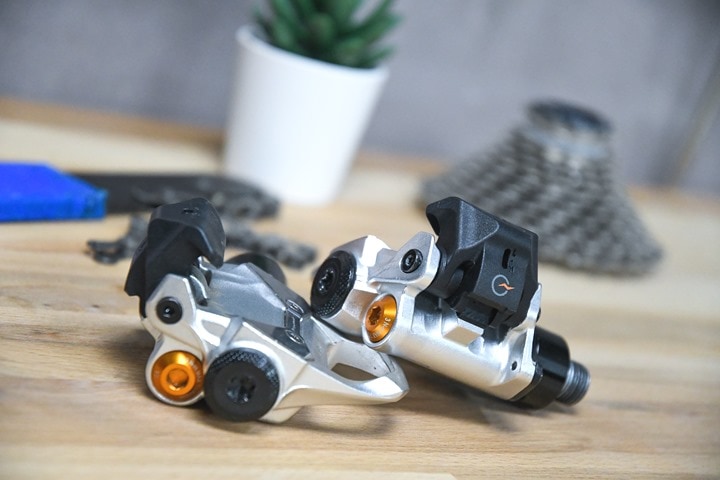

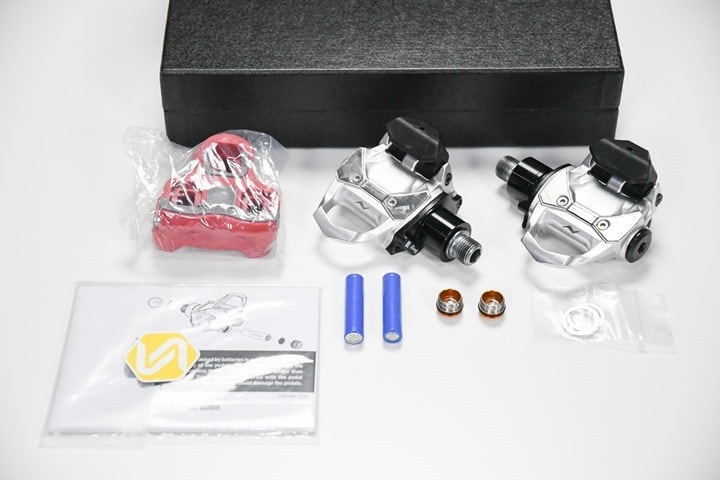
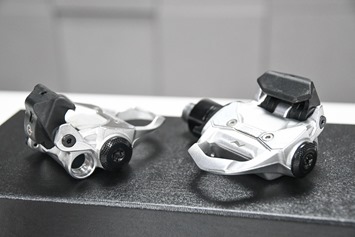

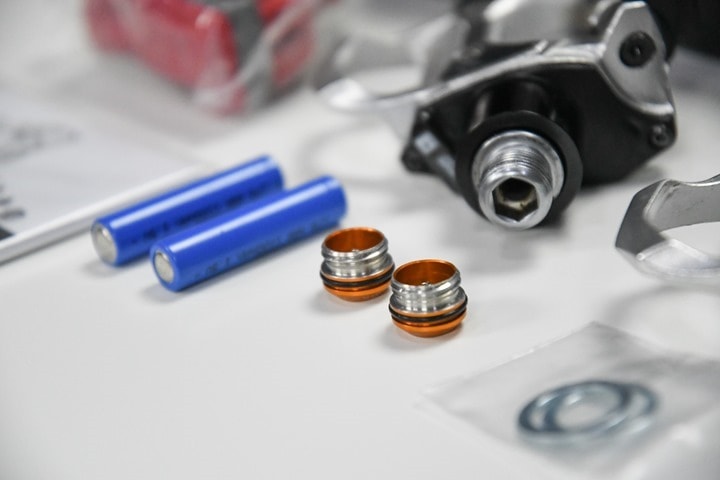
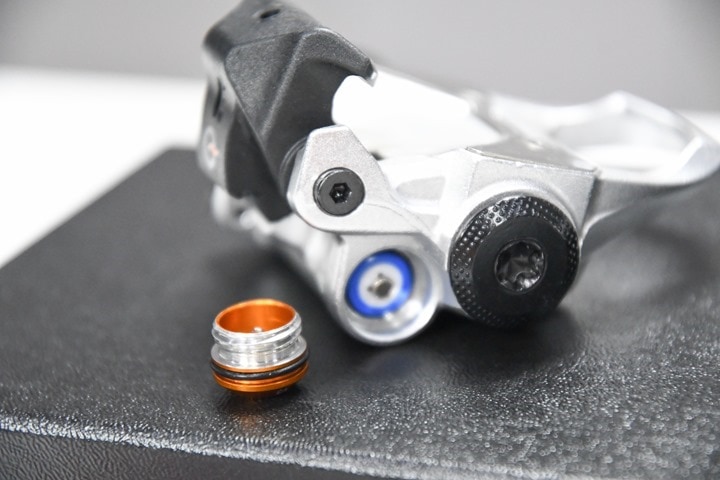
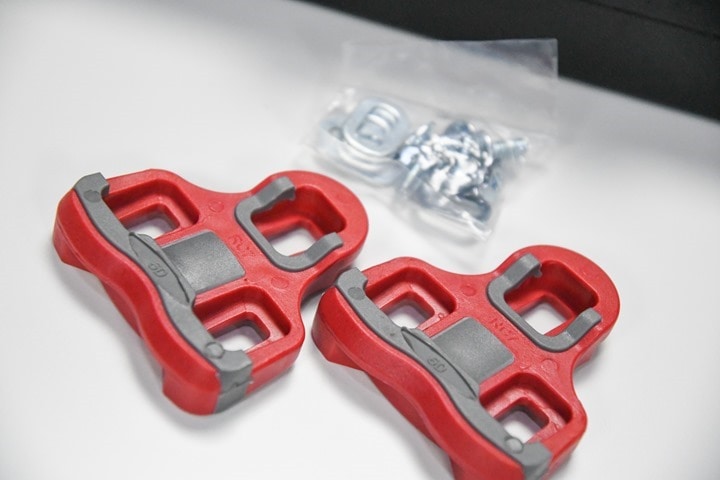
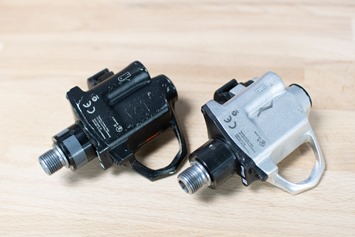
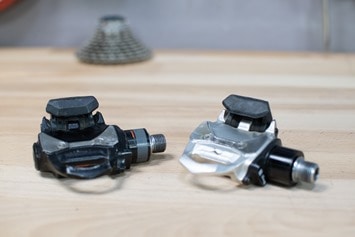
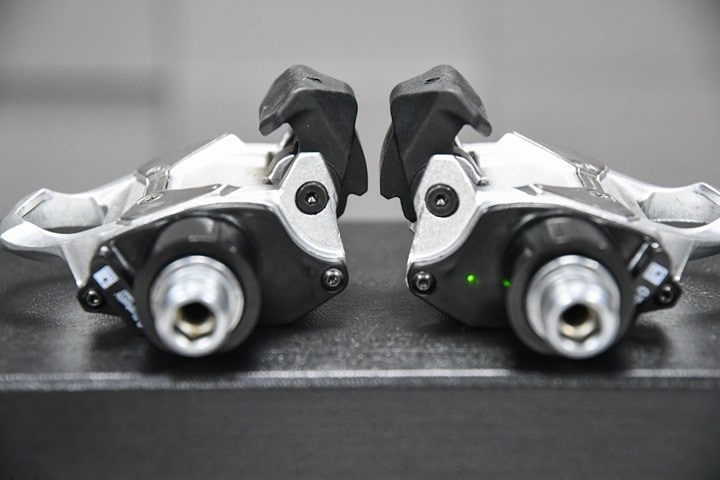
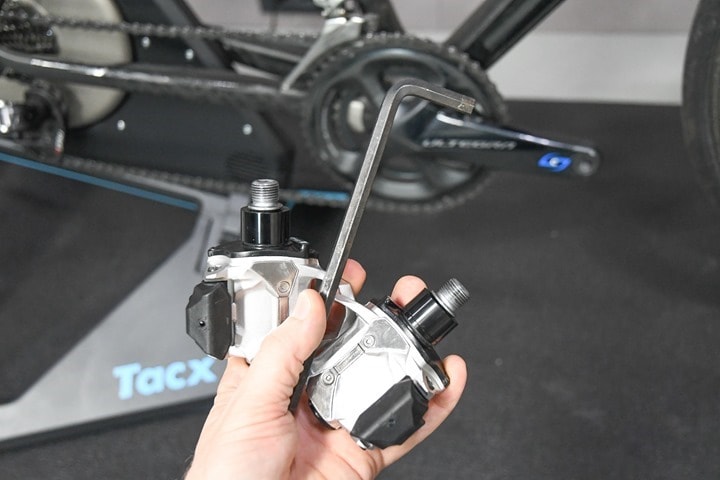
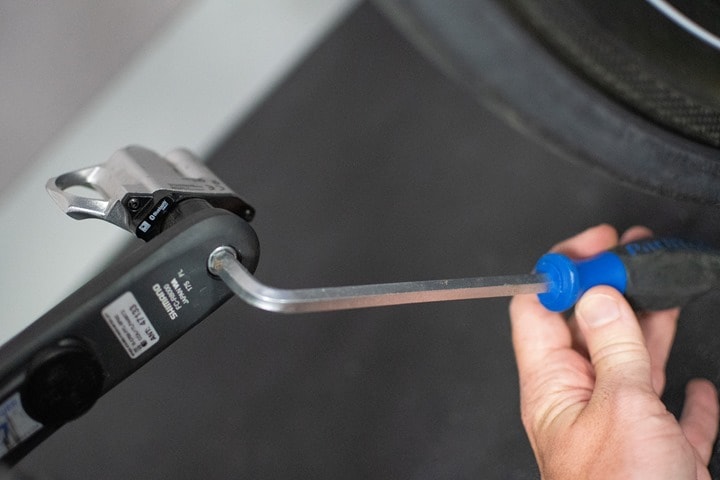



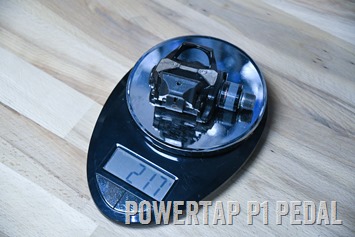

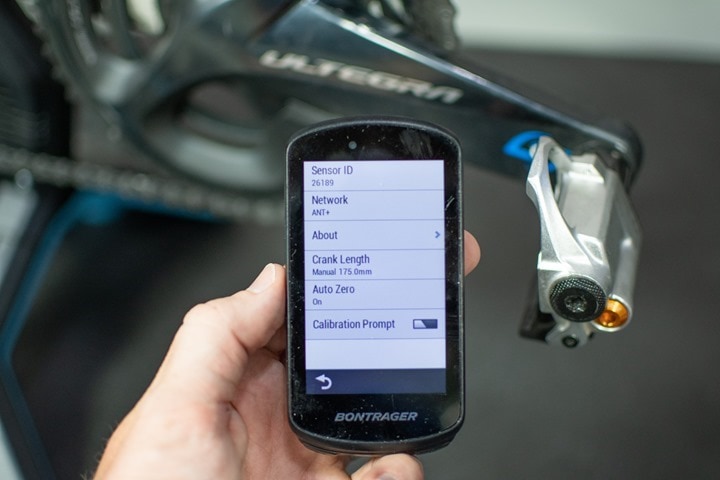


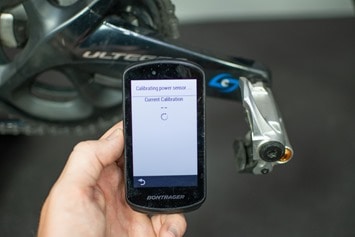
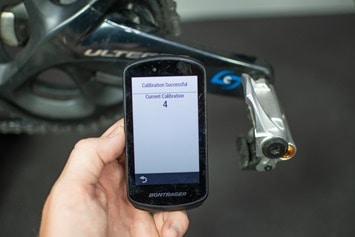
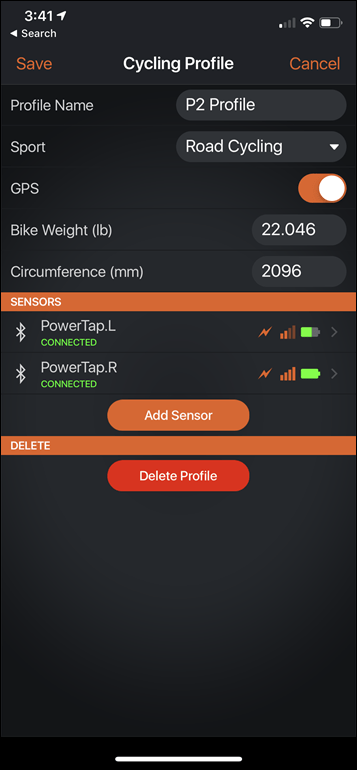
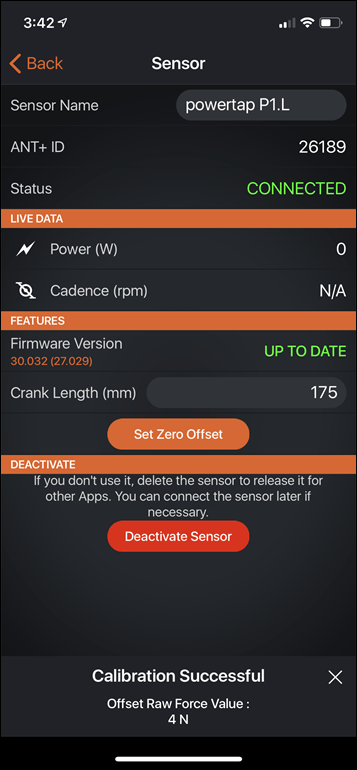
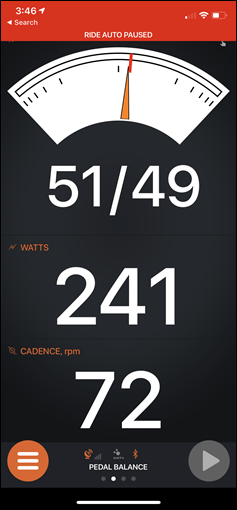
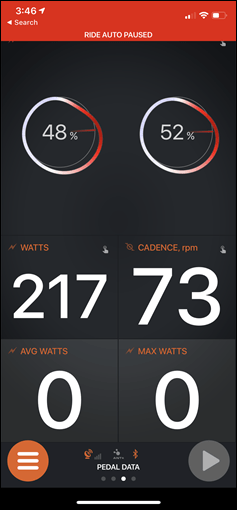
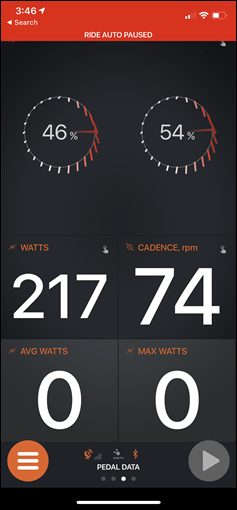
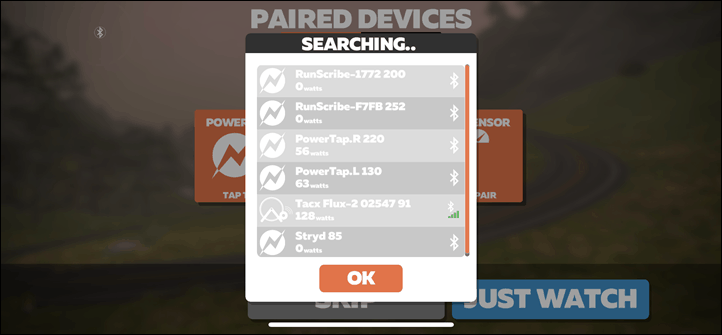
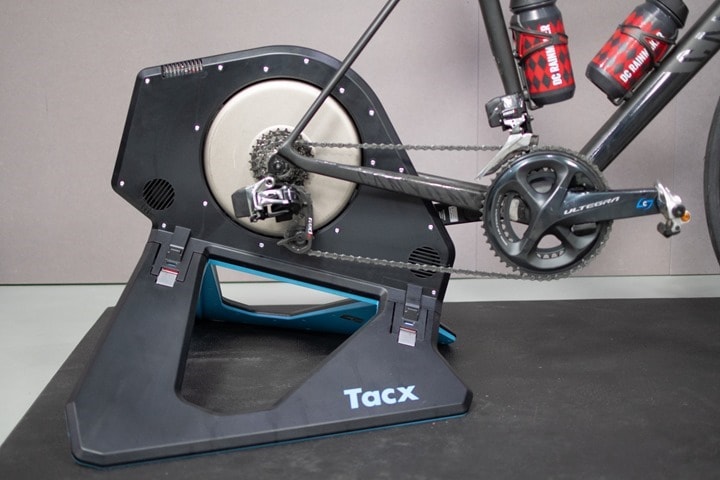



















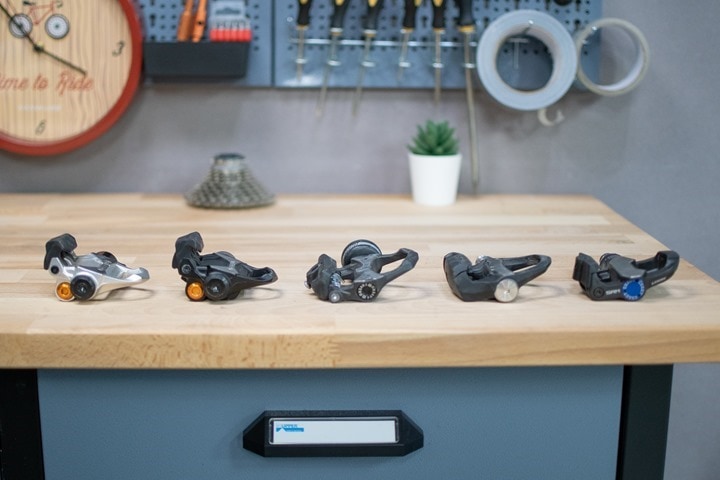
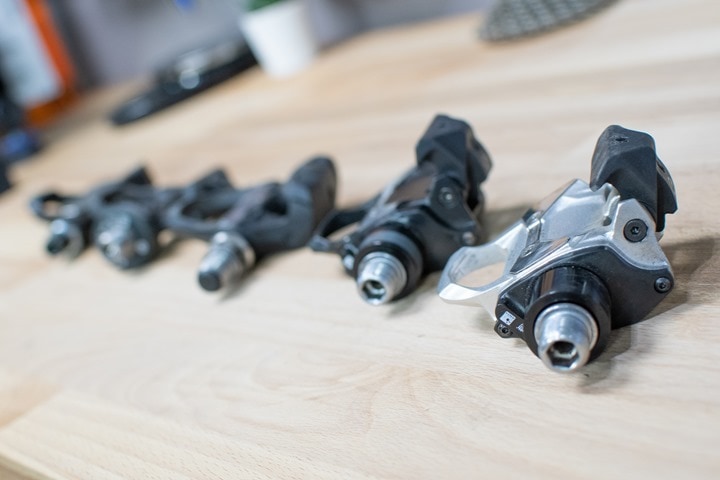
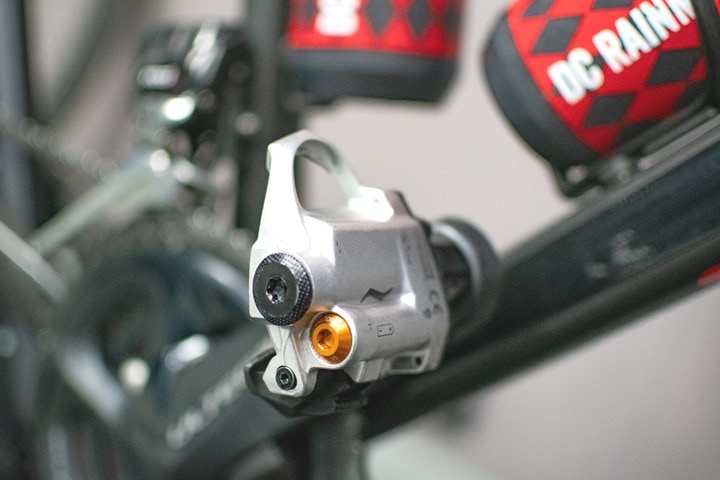
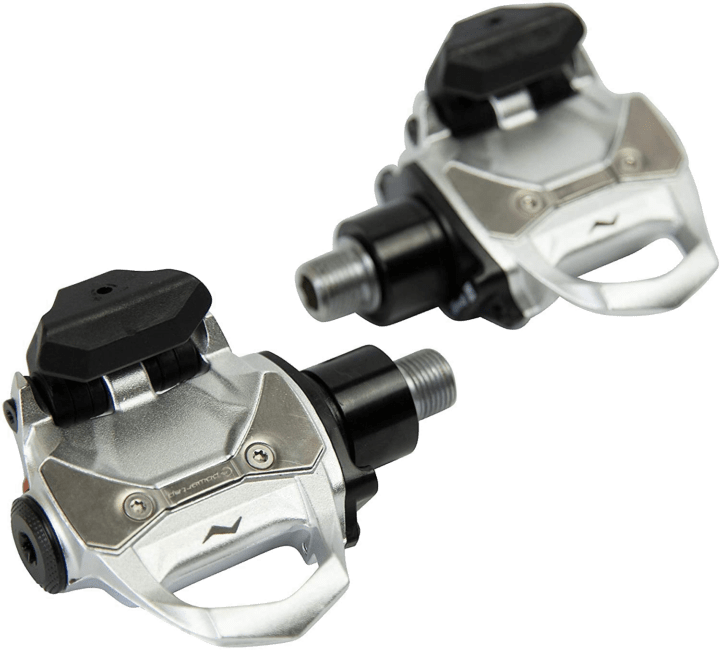


















I have the P1’s and can say that I would buy them again because of the excellent support I got from the company when I had a problem.
I see a pedal as a qasi-consumable bike part. Pedals take a abuse on a bike, so they need to be reliable and backed by a company that will stand behind them. For that reason alone, I would recommend them.
You know, there were a lot of people saying how good Wahoo support was. That is until we all realised it was down to practice as each customer got 5+ trainer replacements.
Give me a company with terrible customer support (due to lack of practice) and great products any day.
I note that very few people talk about Favero customer support. Presumably nobody has ever had to call them!
It’s true, there’s not many comments on Favero support.
I’d guess that’s because:
80% – They built a really damn good proudct
20% – They simply don’t ship anywhere near the volume of units as others (thus, less people to complain)
That said, when folks do call Favero support – the response from readers here has honestly been mixed (at best). Most comments seem to indicate having to push back on Favero, often to get things covered under warranty as it should be. Perhaps stuff has changed in the last few months, and I honestly wouldn’t let it impact ones decision either.
well,I had a problem with one of my pedals on an Assioma Duo, and they were perfect! no complains at all. Very happy customer.
I contacted then twice (by e-mail). Both times I got a speedy answer, from someone who understood what the problem was, en that solved the problem. No warranties involved though.
I have a Favero Assioma that I bought from the link here. But I live in Brazil. Used it without problems in trainer, but the first time I went to mountains I had an accident and when the bike hit the ground I lose the metal plate from the right pedal. I send a email explaining everything and trying to buy this metal plate. They just asked my address and sent to me a new pedal body for free. So I don’t have ant complaints… All perfect!!!
Thanks for the review.
Would we really say that Vector3s have put their issues behind them in 2018. My LBS has returned the last two batches and the forums are nuts about them
Even the need to apply mineral oil to the batteries when installing………….
Would it not be closer to say the vector3s are a failure?
I have the V3 pedals and when they work they are great. If it’s cold they don’t work due to battery issues. As you say I need to lube the batteries. Would I buy them again? YES – they live on my pretty bike.
V3 is a success because they look nice, and bike people who can afford £1000 pedals tend to be very picky about how things look on their nice bike. It doesn’t matter if they work as well as something else. How many real athletes do you see with a Fenix 5+ Sapphire? They all use FR910XTs from the olden days and worn out trainers. For those people there are definitely better options than V3
I wouldn’t say that the Vector 3 pedals have resolved all their issues. I think they have less issues, but they still have issues.
I’d say that the overwhelming/vast majority of issues are resolved at this point. In terms of things like forum/review/etc posts – the issues have more or less evaporated. There are a handful of folks still having problems (I believe Jose might be one of those still – can’t quite keep all my Jose’s straight).
But at this point I think that’s behind them.
How many folks had their issues resolved versus just gave up? I’m going on 10 months of trouble shooting.
It’s valid question – but the general consensus is the various changes seems to have solved most people. Plus, Garmin is still shipping (and selling) craptons of them.
That said, there’s no doubt that if you were to stop me on the street and ask me the name of someone who’s had a terribly experience with them – your name instantly comes to mind.
(Note: I don’t mean that in a negative way to you – you’ve given it way more than the good ol’ college try, and more than I would have if I encountered your issues.)
I could never get my Vector 3 pedals to pair with GCM on a Samsung S7 phone. Called Garmin, updated GCM, but it never worked. Talked to several people at customer support there and posted on their forum but never got the problem resolved.
I would hole heartedly disagree Ray. I just bought garmin v3 pedals in November hoping that the issues were finally resolved. I got them to work once! yes once!! Then the whole battery issue, right pedal missing, etc. I still have not got them to work. Supposedly garmin is working on their 3rd replacement for the battery end caps that “will work this time”/sarcasm.
I think their troubles are way worse then you realize. I also question the longevity of their fix. I think it will get people by for a year or two then the battery springs will wear out just after the warrany expires.
I think like someone said above, many people returned them and moved on.
Right now I am regretting the purchase. I will give it a month and see what garmin does, but I am not hopeful. Garmin has been less then responsive and proactive as usual to address the issue.
I should have bought the assimos.
People with problems are always vocal while those without, aren’t. And if a product sells in large volumes, there’s going to be an occasional duff unit.
But…. actually, no, there shouldn’t be duff units. Products should be properly tested and developed, there should be the necessary tolerances on production lines, and there should be effective QA to catch failures. How many people take an iPhone out of a box and find it doesn’t work?
It sounds like Garmin just aren’t doing the Vector 3s right.
I got my Vector 3 in December last year and I had the battery issue also. I though I was doomed.
It turns out the batteries were a little bit lose (right pedal), I just had to reinstall them and no problems.
But yeah, the issues with V3 are nor solved, I hope I do not have problems again.
“PowerTap is going the opposite direction – saying they don’t see the value.”
Do PowerTap have something else that’s wildly profitable somewhere, or are they trying to wind down the company? This all seems a bit half arsed to me since the pedals clearly could support cycling dynamics and customers clearly like having more features.
This whole industry seems to be making weird choices at the moment and the reference to troubles with trainers was a good one. Market research and testing are not difficult things. Even an intern could easily find them evidence to show people want cycling dynamics in about 5 minutes. Perhaps while that intern is testing the pedals!
Yeah, I don’t get it.
I’d be one thing if they held their ground and said “We think pedaling dynamic type stuff is stupid, and aren’t putting it in our product”. I’d actually almost respect that since I can see that point of view of low-value.
But the current solution is just half-assed. They’ve got an app that displays the metrics while riding, and tout the benefits of it on their main P2 product page. They’ve got partnerships with fit providers leveraging the metrics.
So if all those things are true – then why not let the consumers actually use the metrics? Today the app isn’t setup for that, so it’s mostly useless in that context. Pick a hill to die on, not the valley.
“are they trying to wind down the company”.
All 3 brands that fall under the umbrella of Saris (Power Tap, CycleOps, Saris) all seem to be riding their past successes with Bones racks, Fluid2 trainers and PowerTap hubs. Although they seemingly had all the pieces to make a Hammer trainer and be one of the first to market they dragged their feet so long when it did come out it was just another me-too trainer. Then the H2 trainer should really be called an H1.25.
So bearings still not user serviceable then? And based on my past experience with Powertap, they’ve probably gone with cheapo bearings made of string cheese that need replacing after two years. No thanks. Fooled me once, shame on you and so on
No change there. :(
The Powertap Bearings are a big issue and I would never invest in a P2 knowing that they used the same needle bearing / ball bearing combination.
I made a video on servicing the bearings a couple of days ago:
link to youtube.com
Also I will try to remove and replace the bearing closest to the crank with another one but the dimensions are impossible to find.. dimensions as far as my research:
Outside Needle Bearing: ID: 13,00 OD: 17,00 WIDTH: 10,00
Inside Needle Bearing: ID: 9,00 OD: 13,00 WIDTH: 8,00
Outside Ball Bearing: ID: 6,00 OD: 13,00 WIDTH: 5,00
The needle bearings are very weak and wear out the axle a lot.
Service Center has not been helpful and will not share ANY information and/or spare parts.. BUMMER
Thanks for the great review!
Note: the CleverTraining link is broken (page not found error) but you can search for P2 and the product page exists.
Thanks again for all your thorough reviews!
Alex
Thanks – fixed!
Been meaning to leave this comment for a while and never found the right post to do it in but this will do…
Is there a technical reason why the technology can’t be ported over to mountain bike pedals? Or is it just that the market is too small? Hopefully with the rise of gravel riding that will mean the market for mtb power meter pedals might grow.
Pedal based power meters would be a good solution to constantly changing standards in mtbs (Through axles, boost spacing, wider crank axles).
I agree. I don’t necessarily need a PM on my MTB, but always run one on my gravel bike. I’m still struggling to find a dual sided, or spider or centerlock hub based PM system to run with sub-compact gearing. Having walkable cleat/sole based pedal PM would be a good option.
I’ve explained this on here before. If your power is all coming from the pedals then you’re mountain biking wrong. Pumping would give wildly inaccurate readings, as would any kind of drop, and pedals have no way to measure power from the handlebar.
And all of that is ignoring just how weak power pedal spindles are in most pedal based solutions. They’d snap at the first sign of fun.
That’s so dependent on the type of mountain biking you do… Or, as mentioned above, maybe you’re into gravel riding. Or maybe you want to put them on your trainer but not have to have a separate pair of shoes for indoors on the trainer and outside on your mountain bike.
So then the question comes to that spindle weakness you reference. Is that a _real_ problem or a _suspected_ problem? Are there other technical or licensing reasons?
I’m right there with you. I had been kinda hoping the (gulp, dare I say the name…) IQ^2 meters were going to work out but kinda gave up on it. My only road bike is a CX bike and I only run Crank Brothers pedals, so no pedal-based meter will work currently. Further, it’s a 1x setup. I finally bit the bullet and bought a pulled, unused Ultegra crankset from eBay and put a narrow-wide ring on it. A Bro-San Crankenstein if you will (it’s a SRAM chainring I had in my shop). And I’m just going to put a 4iiii left-only meter on it. Then I can have a power meter on my CX bike but still wear my mountain shoes and not fall on my arse on rocks and dirt. At some point I just had to be pragmatic and run with what was out there (and reasonably priced).
“Is that a _real_ problem”
Yes, look at the weight limit for most power pedals – it’s around 90-100kg for road riding. It doesn’t take much of a drop to double your effective weight or more.
Thanks all. Useful views.
Personally, there are parts of XC, cross, marathon and gravel races such as sustained climbs where knowing how much/little power i’m producing would help gauge efforts.
I appreciate on downhill and more technical sections it may well not reflect the total effort being input but could still be helpful.
It would be a shame if it’s not possible due to axle strength.
SPD, MTB power pedals would be the worst power meter ever made. The failure rate would be very high. You’d have to market them as gravel/road only. On a mountain bike pedals get hit by rocks repeatedly. My SPD’s look like they have been through a war after a few rides. I know not everyone lives where it’s super rocky. But people will buy them smash them into rocks and say hey my pedals are broken. Power meters are relatively sensitive equipment and do not like being smashed. You also need MTB pedals to be thin as possible, to avoid rock strikes.
Also as much as they are not the best, a stages or any other left arm power meter is pretty sufficient for MTB. You get a fairly accurate TSS, NP, and ride and lap powers. You can’t look at power #’s when you’re mountain biking if you can you don’t need power and aren’t going fast enough. But a overall effort level is a great thing to see after a hard/longer ride.
Very interessting discussion. I‘d also like to use my SPD Pedals and get some Power Numbers. Of course W on a hard downhill would be kind of useless, but uphill and flat Terrain data should give some insights.
To sum up, there are two „cheap“ ways to get this done???
1. Left side only crank Solution (Stages, 4iiii) would be around 500€ (First Quick Check)
2. if, if, if iq2 gets their Things done and their product would be usefull. Would be around 200, but we don’t know if or when.
Am I missing another Option?
And also, whats my option with my Canyon MTB with SRAM X9 crank arm? Everything I found was for Shimano…
You’re missing what I use, the PowerPod/AeroPod. I haven’t set up my AeroPod yet, but I use my PowerPod on my road and mountain bikes. Trouble is, I can’t tell you how accurate it is in the mountains since I have nothing to compare it with. (It’d be nice if Ray could do one of his multi power meter comparisons on a mountain bike in actual mountains, but that’s not going to happen any time soon considering where he lives.) The output seems reasonable.
SRAM cranks are pretty poorly supported by most crank arm based manufacturers. It’s the reason I took the SRAM S-350-1 cranks off of my CX bike and got the Ultegra 6750 cranks. You’d likely be best off paying the US$100 for Shimano XT cranks (plus whatever for chainrings) and getting a crank arm for it (4iiii does offer this option). I’m assuming b/c it’s MTB is likely to be 1x. I got lucky and got a pulled, unused set of XT M8000-1 cranks for around US$75 including shipping. If you hunt around you might be lucky.
TLDR: re-painted P1 ?
Any chanse Favero folks will open this thread and post ETA for cycling dynamics?
BikeTiresDirect.com had Powertap P2 pedals at 20% off during a “President’s Day Sale” in February. $720!!! Garmin Vector 3s were not discounted.
Why doesn’t anyone make a MTB SPD power meter? Is there some technical reason? A licensing issue? It seems weird…
Answered above, but I’ll copy here too. If your power is all coming from the pedals then you’re mountain biking wrong. Pumping would give wildly inaccurate readings, as would any kind of drop, and pedals have no way to measure power from the handlebar.
And all of that is ignoring just how weak power pedal spindles are in most pedal based solutions. They’d snap at the first sign of fun.
Dave, I think the point you may be missing is that not everyone that rides road bikes use road cleats. Some of us use Shimano SPD pedals and in my case so I don’t have to change shoes between bikes. It would be great to have them in the spd style not for mtb but for my road bike.
There have been a few SPD-power threads in the review comments over the years. If I recall correctly the suspicion is that the SPD cleat interface is either actively protected by Shimano or no one wants to find out the hard way.
I am yet another rider that uses SPD exclusively. Deeply invested in shoes, pedals, and spares so going the left-side Stages route for power tracking until Shimano announces their own pedal.
As far as the power-input from the arms/handlebars is concerned, I would imagine everything the rider is contributing to forward motion should show up at the pedals eventually. Perhaps I’m over simplifying the power flow.
You’re right, I prefer my XT pedals too. But the 23 people who live in that world and are willing to blow £1000 on pedals are not a sufficiently large market to justify the product development.
Make it 24 people invested :) . I find it hard to believe that no one has invested the resources into coming up with a solution for SPD power pedals. I would be interested in knowing the market data on SPD pedal sales compared to road specific pedals.
Additionally, my winter commuting boots don’t take road cleats. Does anyone make winter boots for road cleats? If so, can you walk in them?
There is another good reason why you would prefer mtb cleats/shoes over road cleats. MTB shoes are much better to walk around. On my cross/gravel bike, I therefore installed a left only power crank, thanks to a great deal I got (4iiii with 105 Shimano crank for only 295 €)
I don’t think the SPD cleat interface is heavily protected – there are many low priced pedals from no name companies out there who use a similar locking mechanism and almost identical cleats. I am using them on my touring bike for 20 years with original Shimano cleats and no issues at all.
I think there would be a market for SPD compatible power meter pedals since there are many riders who use these pedals for the wider range of shoe types available and many athletes who use mountain bikes mainly for endurance training on back roads, agricultural and forest tracks, to get away from the traffic and into nicer scenery. Especially on bad track surfaces the power numbers are of great interest, since there the speed reflects very insufficiently the effort.
So, let’s hope the iQ² will be available soon (and work as advertised)..
Ray, by the way – have you received a pair of them for testing? On their FB page they showed the first production batch and announced the shipment.
No, I haven’t received any from them yet.
Honestly — I’d like to see an SPD-SL power meter pedal too, like the Vector2 refit kit but actually built in.
I’m interested in a pedal power meter; a hit-and-run driver left me with a displaced, comminuted acetabular fracture and a badly dislocated hip at the end of 2017 (along with 20 or so other broken bones and some scars) so actually having an idea of how much that leg has recovered would be nice. Thus I need dual sided.
I want to be able to move the power meter, since I go home and borrow a bike, and it’d be a ‘nice to have’ to make it super easy to swap.
I also have a beater bike and a nicer bike now, so I want one where my cleats are the same for both bikes. I’ve got Look on both now, but I have the Look squeak that I never had with SPD-SLs.
The Favero’s look great for the money, but I’m a little nervous about cleats NOT working on both bikes and that’s a huge faff. I don’t necessarily want to swap pedals every time I ride the other bike, etc.
Meantime, I just ride :)
I am with you. I broke my hip last winter – displaced sub-capital fracture of the femoral neck. It never healed and the hip was replaced. The crappy little PowerTap app on my phone turned out to be very useful. Ultimately it confirmed the strength was back in the leg, but it was coming way too late in the pedal stroke.
I have the P1 pedals and they don’t work properly with Sufferfest—I get 1/2 power. I wonder if the remove-one-battery trick will fix the problem. Sufferfest says they “don’t have the technology” to work with P1 pedals. I’ll try it and report back!
Worth noting that P1 pedals can still be had for £499 in the UK. That’s pretty compelling verses the competition..
Thank you for the review Ray,
I have the P1 but went V3 instead of P2, no discernible upgrade to me.
PS: I laughed wholeheartedly at my screen seeing the price of the SRM, I had forgotten just how expensive they were.
17k miles on my Powertap P1 pedals and counting. I purchased from their first release on Sept 4th, 2015. At 7.6k miles (Aug, 2016) they stopped working (transmitted 0W, and I KNOW I’m a little stronger than that lol). I sent them in for warranty repair and they also went ahead and replaced the bearings for me while they were in. They’re still going strong and I’ve been happy with them. I don’t care if they’re big and ugly :)
oops, didn’t mean to add a pic, thought that was for an avatar lol
Thanks for the review. I have chosen the P1 last December mostly to use them in my spinning bike to be able to ride on Zwift and Rouvy. They have been reliable eversince and I could recommend them without any hesitation. I would though have some doubts regarding the looks of the P2 – I simply do not understand why they have ony come up with the silver version – with most cranks and groupsets beeing black ;-).
Note that the PowerTap Mobile app is ONLY available on iPhone. That’s right, the largest mobile OS in the world doesn’t support their products. They have told me personally in the past that “they were working on an Android app” but never delivered, and then denied the conversation ever took place.
They’ll never get another dollar from me.
Just use Rouvy instead – works just the same for calibration and firmware updates to Powertap
I have a Power2Max NGEco powermeter on my MTB. Only $650 and double sided. Works perfectly with any MTB pedal.
Its not really double sided. It collects from the spider so records the total power from both legs and assumes the power is coming from the leg doing the down stroke. Try pedaling with only one leg and see what it says
Correct, it is not a true dual sided measurement but it gives you an accurate total power number instead of just doubling the left leg. Left side only will only give you an accurate total power if both your left and right legs are balanced. I’ve talked to a number of people that complain that their trainer isn’t accurate but further discussion reveals that they are comparing it to a Stages and they more than likely don’t produce the same power with each leg. Single sided is fine if you are only comparing it to another single sided measurement.
FSA also makes a MTB version of their PowerBox.
Interesting that PowerTap released these. I have P1 pedals and love them. All apart from them not transmitting over one channel to connect to Zwift/TR/Sufferfest.
Otherwise they just work.
Why would powertap not rework the form factor? I just don’t understand this release at all and see no reason to buy over the P1 pedals.
Interesting about the dynamics side (disclaimer… I am not a cyclist!).
This seems similar to many of the advanced metrics on running/tri watches. You need to have the features on the list/PR blurb, but in the real world there is still a major debate going on about how useful they are to actually improve training. Imagine if the next Garmin forerunner didn’t support run dynamics !? It would get slated and you’d criticise it (and I’d agree with that). The device would likely sell fewer units as consumers questioned the obvious gap in the watched features…. but how many of those consumers would *actually* miss such features and/or their training suffer as a result ?
Powertap have looked at advanced metrics and shrugged… just like most athletes. Maybe a good technical position to take, but perhaps not a good commercial decision.
I kind of agree about dynamics – but with (road) cycling you do have a more structured framework, not as much chance for variety as with running.
You only have to look at power meters for running (I have stryd) compared to running meters for bikes. There is zero doubt that power meters for bikes are an amazing training tool, I’m not sure the same can be said for running.
I think there is definitely some use in seeing where in the pedal stroke you are producing power…how even that power is throughout the stroke etc.
We may not all agree on what it is we are aiming for but I feel there is more chance to get useful data for cycling than for running.
Just my 2p
^^^^ “running meters for bikes” = “power meters for bikes” doh
I have been planning to upgrade my old hubs and crank based power meters with pedals and i’m glad i missed the 499usd sale of the P1 over at CT as posted by Ray. Coz i was planning to get two pairs but then I heard from a couple of my buddies that their P1 (that were bought early last year) bearings failed and only have 6 months warranty; not user serviceable unlike the Assiomas. Approximately 250usd to have them fixed by PT. Not good.
So I just added a Benjamin and a half (over the P1 price on deep sale) and i’ve got my first pair of Assiomas. Pretty accurate compared to my Tacx Neo. And i’m not afraid using them on gravel as their body is also user replaceable.
Buying the P2 at their current price and features is also “no go”, the way i see it. They are basically the same as P1 features- wise.
What about the data the pedals give beyond just basic left/right power? The more advanced metrics powertap already gave (link to powertap.com) Rouvy does use that data:
link to support.rouvy.com
Or the cycling dynamics that is being added to the ant+ standard
I seem to have missed that part, sorry. But the extra data they give data is still supported by Rouvy and is recorded there to look at later
Take extreme care when using these with 175mm or greater cranks. The P1s almost killed me the first time I rode with them, hitting the ground while I was aggressively descending a fast tight curve, lifting the entire back of the bike off the ground. I have no idea how I didn’t get flung off the bike into oncoming traffic.
So I took extreme care not to pedal in tight curves, yet still somehow managed to do it again a year later. I then switched to the Assioma, and have not had an issue since.
Fwiw – the allowable angle on both the P1/P2 and Favero Assioma is actually identical at 27* on my 175mm crank length equipped bike.
I even measured it: link to dcrainmaker.com :)
A “fast tight turn” with inside pedal down? Not a good idea with any pedal.
link to coachlevi.com
link to youtube.com
I’m very surprised that they measured the same, since they seem so apparently-different both visually, and in practice.
JD, the “fast tight turn with inside pedal down” is a result of putting in power (pedaling) while still in the curve (this curve, FWIW: link to goo.gl ). I’m riding on a public road, so I don’t want to enter the curve anywhere near the edge of the envelope; I enter with a safe margin of slowness and put power on as soon as I see the exit and judge that I can accelerate safely.
I’ve been aggressive like this on descents for years, but have had no hint of trouble with anything but the Powertap.
Anyone knows if the next release of the Favero firmware containing the pedal dynamic metrics is coming soon?
Was happening soon in Sept of last year link to dcrainmaker.com
I read so much about these powerpedal and actually never tried or bought them as im too afraid. But, my heart says for V3. Its like choosing a girl, people told you bad things about them sometimes but you still prefer them, haha
So true about the V3. So very true
And again, no SPD version :-(
I use SPD only on my road bike, because I also want and need to walk. Especially on a longer tour over some days or when I drive to work or when I visit someone but use my road bike. On longer tours I take only Flip Flops as my 2nd “shoes” for weight and size. My Northwave Bike’n Walk shoes are really great for walking too – best shoes I ever owned.
In the summer time my road bike is nearly my daily driver, for winter time and very bad weather I use my cross bike with one side SPD, other side normal pedal. At least on my road bike I’d like to have a power meter.
Industry is too focused that every road bike driver use road bike shoes…
The battery door on P1 is the only thing that I’m unhappy with – very shallow and feels like I could round it off every time I cvhange the batteries. Do you know if P2 battery caps are compatible with P1?
Hi Ray, I am considering getting these or the Assioma for my road bike and I also have a Whaoo Kickr. I am assuming I would need Xpedo pedals on the Kickr to be able to use the same shoes on both? Thanks
For those worried about cleat compatibility, it’s a real thing.
Short story: I got a pair of these pedals in an offer at Kona. Money off = good deal I thought. And the pedals work fine regards outputting the correct power. All was good until I tried to swap various road shoes/boots for different weather conditions with the powertap pedals….
The (very) unpretty result was unexpected unclips when pushing hard up hills when I was using Look Keo cleats in the P1 pedals. I nearly killed my crotch on the handlebars a few times.
So in order to fix it I had to run a different pair of shoes with the specific P1 cleats (which also look uncannily like the Look cleats with a casual glance – not cool).
In the end I just called it what it is (stupid) and sold the pedals and invested in a pair of the Garmin pedals which I’m very happy with. They work with my Look Keep cleats just fine with no unexpected unclips and I no longer have to faff around matching pedals to shoes except foe the Shimano spd/Keo Winter/summer switch.
All good, but I wonder why they didn’t fix this with the V2 model. That’s just really dumb!!
I’ve had my first power meter product, the Assioma pedals since ~November 2018 (other than 3 months using a PowerCal) and they have been absolutely faultless. This is even after constantly swapping them between 2 road bikes and a tt bike during the week.
I haven’t experienced the customer service side which in my view is good as it shows a product works reliably.
Very happy with the Assioma’s and would highly recommend them.
Thanks Ray for fantastic tech/gadget articles!
has anyone also troubles with balance data missing, wrong wattage means often from over 300w to 60w.
pedals only used one week, so like new
no response from powertap support ?
greetings
klaus
That sounds like only one side is being captured. Double-check using the PowerTap app to ensure you’ve got both the left and right sides connected/broadcasting. May simply be just one of the batteries has died. Every once in a while there are cases where you just get a bad battery from the begining.
but it’s strange, that it seems to work at the beginning and end
and the voltage of both batteries (start: 1,7 / end: 1,5) seems to be ok
here are two example rides
link to strava.com
link to connect.garmin.com
link to strava.com
link to connect.garmin.com
thanks in advance
klaus
Hello
some updates
I tested it now with an IPhone and the failures and drops are much shorter and not so often.
Seems that ANT+ will be interrupted by outdoor Wifi or high voltage??
and it seems also, that I have more data troubles when I’m riding in aero position
yesterday I have tried to mount the headunit (Garmin Edge 1000)
on the top tube of the bike:
looked good for the first 10-12km (sitting on the bike)
from km12 to km44 mostly in aero position and the “horror” of drops from over 300w to under 100w begins again
So could have the pedal problems with my pedalling “rythm” or a technical issue of some measring tapes of the pedal(s)?
(P1 have had similar problems ..)
(@dc: have you been riding in different positions with them?)
link to connect.garmin.com
link to strava.com
so, yesterday test without aero but full pull :)
only some issues and good data
today normal and aero but not pushing to the limit, data quality like yesterday
so it’s that question if a technical problem or my pedalling??
20190411
link to strava.com
20190412
link to strava.com
link to photos.app.goo.gl
I’m using P2 pedals for over 2 months now. Most of the time paired with wahoo elemnt bolt. Pedals broadcasts a lot of pedaling data (besides power) : balance, smoothness and torque for each leg. Do I use it? Not really. I reviewed it as post workout data 2 or 3 times, but that’s it. There’s not much you can do with this data, right? There are some exercises to improve your pedaling technique, but ultimately this is something that comes with time on the bike. Whenever I was trying to intentionally change L/R balance it was only ruining it. There are some interesting observations, ie my left leg tends to generate more power (than right) during easy work and right leg is the one for heavy work (ie sweet spot and higher levels of my FTP). Difference is only 2-3% in overall power, but still observable. What my physiotherapist said is that this well corresponds to natural body asymmetric: left leg usually (subconsciously) plays the role of a supporter, ie when we stand still for longer period of time and right leg is the one for doing conscious work, like kicking a ball etc.
What I’m trying to say is that advanced pedaling data might be something interesting to know, but it will not improve your workouts or give any valuable feedback. There’s not much you can do with it.
It is a huge oversight not to highlight that the app is IOS only and they don’t have android support
I have a relatively new (1 month old) set of P2 Pedals and have noted that anytime I’m working on low cadence drills and my cadence drops below 30, the powermeter reading drops and gives me a zero cadence/power reading. Anyone else experience this and or have a fix/setting adjustment (aside from PEDAL FASTER)? I’m primarily using them on the trainer for TR workouts. Thanks!
Ray, thanks as always for your thorough and helpful reviews. I am happy to support you by using your link. You are my go-to reference for triathlon gear. Much appreciated.
I have been having a problem with my power numbers being very low when riding outside or when on a trainer. I just realized what you said makes complete sense about getting power data from only one side. I figured out that I’m getting data from only one side and the numbers are not adding up together.
What should I do to d that?
Thank your for your review. However, I experienced the same problem with Zwift displaying half the power, and in my case, removing the battery from the right pedal did not help. I use Android and/or PC (tried connecting through both). Might that be different? This seems like something both – or either – Powetap or Zwift could fix. My Wahoo head unit still displays the doubled one sided power with one battery removed.
Big issue for me as this makes the P2 pedals completely incompatible with Zwift. Strangely, the P1 pedals did work, with the exact same setup.
I just got an upgrade from my P1 pedals to the P2 pedals from quarq . I had to send them in because they were not reading properly and not connecting to my head unit/Zwift . My problem is the connection to Zwift . I have tried the remove the battery from one pedal and just connect one pedal , but still only shows half power . I have read the review multiple times but have not seen any other updates about the connection issues. I was wondering of you have any new methods or tips on how to get this done .Thank You
Any update on your opinion with regard to Garmin 3 / 3s vs Duo / Uno. Toying with one or the other as I have 3 different crank lengths from 165 on Tri bike to 172.5 on a roadie so pedals are most sensible power placement for me. If I was to do another ironman i’d try to go even shorter on the cranks so even a cheap 165 crank powermeter wouldn’t interest me.
Has the cycling dynamics moved forward for Favero? Is the “Keo-like” pedal thing an issue in reality?
Is the slightly lower stack of the Assioma a reason to go for it.
If both were at the same price point would aesthetics be the only differentiating factor?
Thanks a mil
Hope you’re keeping well
Kevin
I happened to upgrade to this P2 pedals and after one month of using them the power readings are very inconsistent. I just noticed the right one is not working properly. Changed the batteries, zero reset, calibration several times, tried different Garmin devices and still with the same issue.
I searched their website and only found P1 information and barely any support for the P2.
Would love to hear a good advice on how I might be able to solve the issue.
Thank you!
Great overall review as I’ve been on the lookout for a set of “pedals” but haven’t pulled the trigger due to the $$$ involved and other priorities at this time. I’ve been using a PowerTap hub and have had little to no problems with it except for the occasional “quit showing power” on my watch. It’s a pain to swap from my tri-bike to my roadie. I’m a triathlete and I use a Garmin Forerunner 920XT…yeah I know but it works flawlessly and gives me what I need without dropping $$$. Are the PowerTap P2 pedals compatible with this unit? Or will I need to upgrade that as well if I purchase the pedals? Any input is appreciated.
I had them set up on my 920xt and had no issues at all
Thank you for the input.
Since powertap was purchased – the powertap mobile app appears to have disappeared.
Anyone been able to update their firmware on theirs recently?
You need to get the sram axs app , they are now part of sram company and your updates and customer service is now with them
I purchased a set of P2 pedals recently and am wondering how you were able to connect both pedals to your Garmin 1030? When I tried I can only get one to connect and then I ended up taking out the battery of the right pedal due to issues. I never see data for a left or right, just combined. The other issue is my Garmin Edge frequently generates a right pedal missing error. Very frustrated and wondering if these work dual sided with any other bike computers besides Garmin?
Are they connecting via Bluetooth or ant+ ? I have them connected to my garmin edge 130 via ant+ and have no issues , I don’t see the individual power while on a ride but I can see the split afterwards on garmin connect , as far as I know the pedals don’t show live right / left live power , contact sram and they will help you out , I have great experience dealing with them when I had issues with the pedals
You are a beauty. Thank you for the incredible effort. That was very helpful. I’ve had P1’s for a long time. They work. They are scratched and banged up. Your info caused me to be super happy to upgrade to P2 and I will buy through your link. Well done.